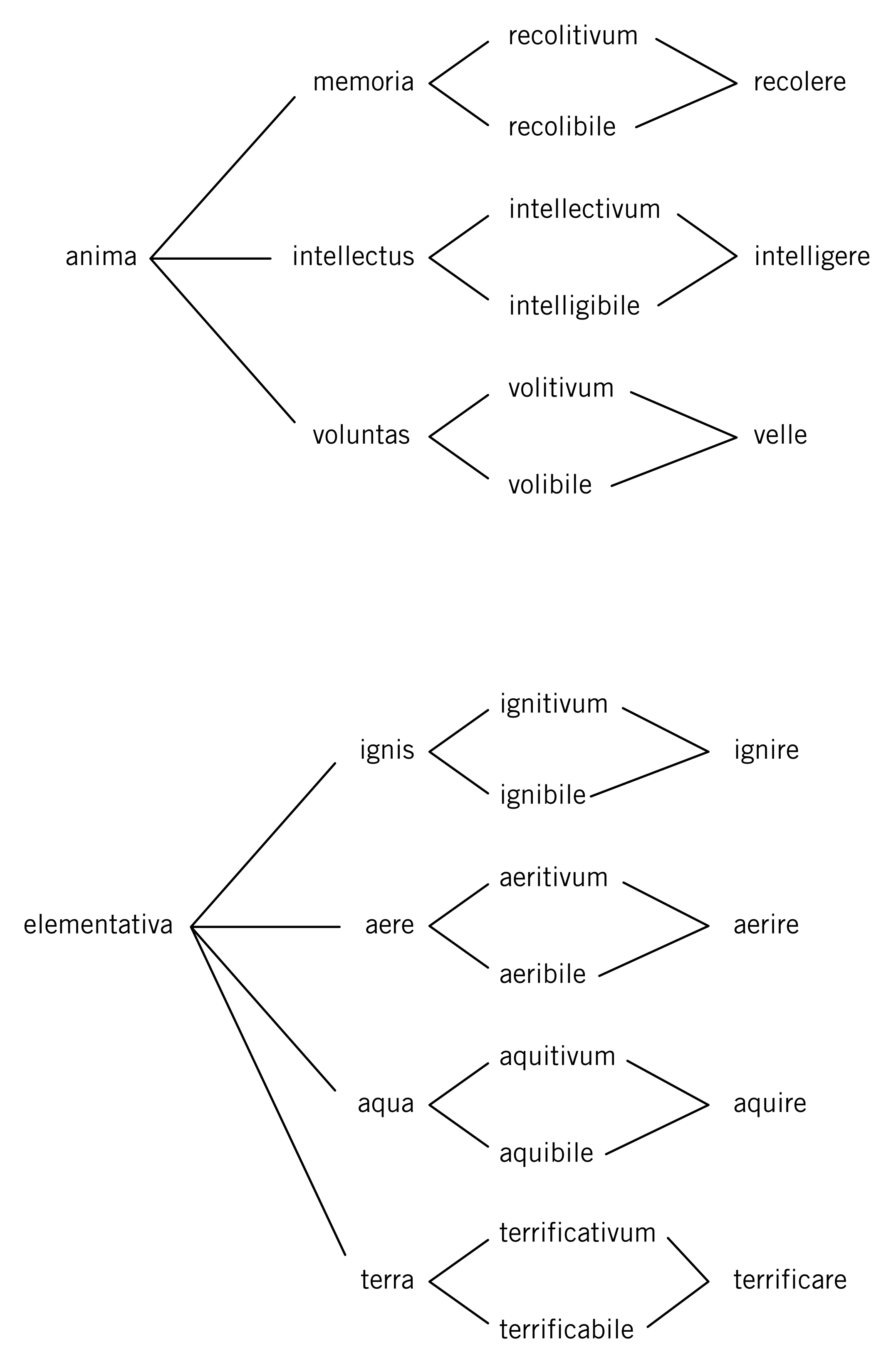- Introduction
- Context
- Life
- Thought
-
Works
- The multilingual nature of Llull's works
- Llull and the catalan language
- Diffusion and preservation
- Book of Contemplation
- Book of the Gentile
- Book of the Order of Chivalry
- Doctrina pueril
- Romance of Evast and Blaquerna
- Book of the Lover and the Beloved
- Ars demonstrativa
- Felix or the Book of Wonders
- Book of the Beasts
- Desconhort
- Tree of Science
- Exemplary Tree
- Cant de Ramon
- Rhetorica nova
- Logica nova
- Liber de fine
- Ars brevis
- Phantasticus
- Ars brevis praedicationis
- Gallery of images
- Database / Dictionary
Correlatives

The doctrine of the ‘correlatives’ is an original articulation of Llull’s dynamic ontology. The correlatives had their origins in an unfolding of the nominal forms of transitive verbs: the present participle as an active form, the past participle as the passive and the infinitive as the nexus between the two. Llull thus rendered general a doctrine which Saint Augustine, in an attempt to explain the Trinitarian mystery, had applied to verbs expressing the soul’s activities (‘knowing’, ‘known’ and ‘to know’, ‘loving’, ‘beloved’ and ‘to love’, etc.). Each of Llull’s principles, therefore, once converted into essentially active forces, expanded to form the triad of their correlatives (‘Bonitas’, for example, = ‘bonificativus’, ‘bonificabile’ and ‘bonificare’; ‘magnitudo’ = ‘magnificativus’, ‘magnificabile’ and ‘magnificare’, etc.). Even Llull was aware that readers might be alarmed by such eccentric and apparently nonsensical language! But he was not talking nonsense. What he wished to express by this strained and ungainly terminology was the profound sense that God was infinitely active and fecund and that, therefore, his dignities could not remain eternally idle and sterile. From this new theory, the principle axis of Llull’s theology, could be deduced the rationality of the Trinity and the Incarnation. The theory, however, was also relevant from the philosophical point of view. As an expression of a dynamic conception of being, the correlatives set the entire edifice of Llull’s system in motion. Through them, even the world participated in the vital Trinitarian rhythm found throughout God’s creation.